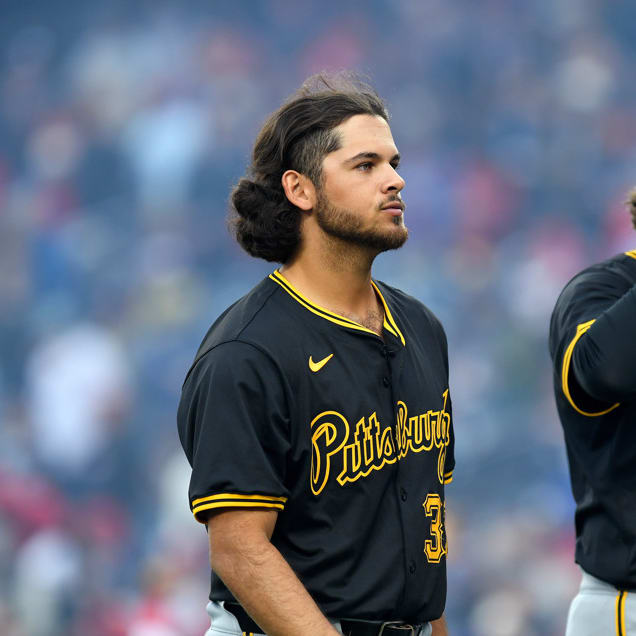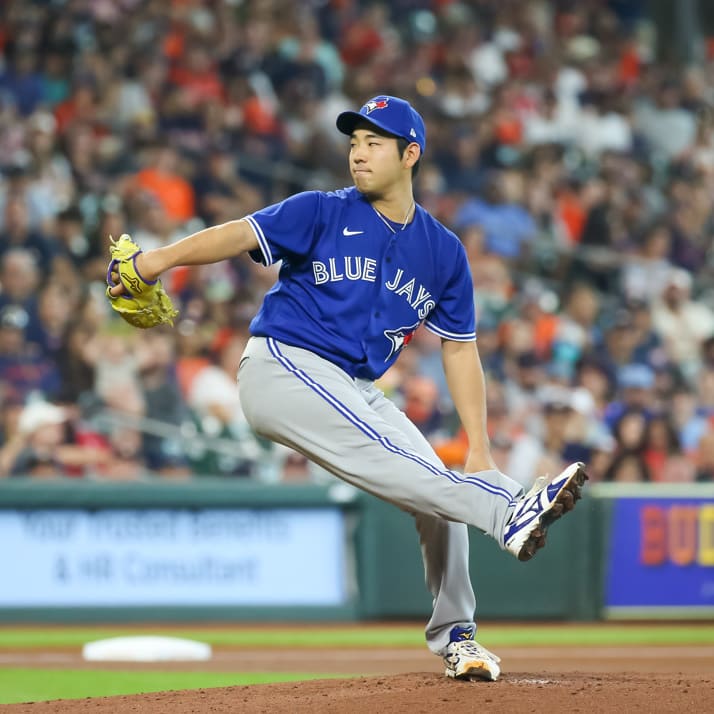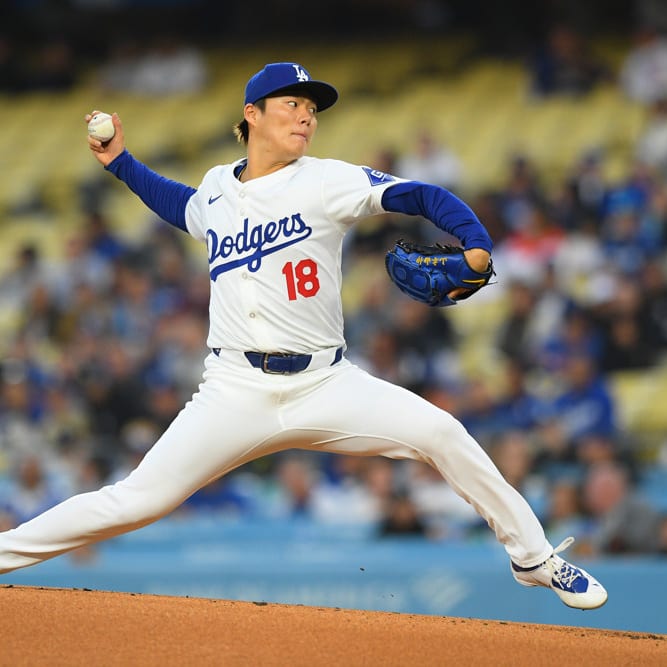This article is part of our The Z Files series.
Everyone approaches draft preparation in a unique manner. For me, it starts with pitching and I fill in the blanks. Most will wait until next spring to think about this, but most aren't starting a real 2018 National Fantasy Baseball Championship (NFBC) league the final weekend of the 2017 season.
As was discussed last week, my podcast partner Derek Van Riper and I are co-managing a team in the Premature Edraftulation League. We have the 12th pick, which means drafting an ace hurler will be on the table.
I'm sure I'll circle back to this when draft season is in full bloom, but I have three primary schemes with respect to pitching. I'll tweak as I become more familiar with the 2018 inventory, but here's the general outline.
Ace early
There are still some stubbornly refusing to even consider investing a first-round pick, or the corresponding auction dollars, on a pitcher. While it may not be my first option, it deserves some rumination.
The main reason antagonists deride the notion is the feeling that the hole resulting from not starting off with a hitter is too much to overcome. This simply isn't true. For one thing, the success rate on first-round picks, or those costing more than $30, is about 35 percent. Why insist on a strategy with a one-in-three chance to work? Further, at least on paper, the player pool is deep at the top. That is, I'm fine with the quality of bats available in Rounds 2 and
Everyone approaches draft preparation in a unique manner. For me, it starts with pitching and I fill in the blanks. Most will wait until next spring to think about this, but most aren't starting a real 2018 National Fantasy Baseball Championship (NFBC) league the final weekend of the 2017 season.
As was discussed last week, my podcast partner Derek Van Riper and I are co-managing a team in the Premature Edraftulation League. We have the 12th pick, which means drafting an ace hurler will be on the table.
I'm sure I'll circle back to this when draft season is in full bloom, but I have three primary schemes with respect to pitching. I'll tweak as I become more familiar with the 2018 inventory, but here's the general outline.
Ace early
There are still some stubbornly refusing to even consider investing a first-round pick, or the corresponding auction dollars, on a pitcher. While it may not be my first option, it deserves some rumination.
The main reason antagonists deride the notion is the feeling that the hole resulting from not starting off with a hitter is too much to overcome. This simply isn't true. For one thing, the success rate on first-round picks, or those costing more than $30, is about 35 percent. Why insist on a strategy with a one-in-three chance to work? Further, at least on paper, the player pool is deep at the top. That is, I'm fine with the quality of bats available in Rounds 2 and 3 if I start with an arm.
At least in my not-so-humble opinion, the key with starting with an ace is not doing what many do and fade pitching, but rather to build on the edge. Conventionally, in a 15-team mixed league, the balanced approach means shooting for 12 points in each category. If I go pitcher early, I'm looking for 13 or 14 points in ERA, WHIP and strikeouts, even if it costs a few hitting points. Considering the success rate of first-round picks, it's quite possible to start with a pitcher and not sacrifice any hitting potential.
It's no secret I would have taken Clayton Kershaw first overall this season. After another year with fewer than 30 starts, his third in the previous four seasons, I'm dropping Kershaw out of his own tier. He's still the top pitcher on the planet, I'm just no longer willing to take him ahead of a handful of hitters. At least on first pass, I'm not considering any pitcher before Mike Trout, Jose Altuve, Paul Goldschmidt or Nolan Arenado. Their track record of outstanding performance is too much to ignore. Other may enter that group, but as of now, a pitcher is in play at 1.05.
Presently, Kershaw joins Max Scherzer, Corey Kluber and Chris Sale in the top tier, worthy of a first-round pick. I'll be honest, I'm not sure Kershaw would be the pick at 1.05. Scherzer is slightly ahead of Kluber and Sale, who are a dead heat. I haven't decided where Kershaw fits. My current thinking is he's either first or fourth. The other trio are so close, I either bank CK makes 30 starts or I don't.
If you're wondering where I am with Madison Bumgarner, my initial impression is he's in a tier of his own, ahead of the next cluster, but lacking the strikeout potential of the ace quartet. I'm concerned Bumgarner will no longer be a 220-inning horse. There's a lot of mileage on that left wing and I'm not sure the Giants will expect seven innings every start. His strikeout rate is above average, but he's more a volume guy than a dominant hurler with a double-digit strikeout rate.
Playing it straight
Sorry, I don't have a catchy heading, but I do have a pithy mantra when going this route: Draft the pitcher, not the round. This emanates from so many preaching not to draft a pitcher until a specific round. This is a huge mistake. Always be proactive to the draft flow. Don't pigeon-hole picks into preset rounds, at any position.
Going this way assumes I'm not starting with an ace. Before the draft or auction, I map out what I need the staff to look like to be competitive. It's a tiered approach, requiring one arm from each group. If executed, the result is a staff likely to generate the ERA, WHIP and whiffs I desire. Truth be told, I do this with an ace as well, as leading with a closer as discussed next.
Here's the key to this approach. I don't worry about rank as compared to draft spot. I need hurlers of particular quality to make it work. Let's take the top tier off the table, since if I'm playing it straight, the top tier is already taken. I need some from the next couple of tiers, or my staff will fall short of expectations, at least on paper. Say everyone is gone except one, who is ranked 60th overall on my cheat sheet. If it's pick 50 and I'm sure the pitcher won't be there at my next pick, I'll ignore the 10-pick gap and call his name at 50. Draft flow dictates doing it. Many will cite the most misused word in fantasy ("value") and wait until a pitcher is in sync with their draft list. Sure, they got value (cough, cough), but their staff will have trouble garnering 12 points across the board. Of course, their hitting can make up the difference, but my experience is biting the bullet and paying for pitching is more practical, and effective.
The rest is lather, rinse, repeat. I've mapped out what I need for all nine roster spots. Usually, I only must jump one, maybe two pitchers up to make it work. By SP3, I'm usually taking pitchers I like more than the market, at market price. This potential return on investment counters the loss on the other arms.
Top closer
Never pay for saves. Some swear by that axiom. Context is everything. The shallower the league, the less likely I am to pay for saves. It follows the deeper the league, the more likely I am to own a top closer. My favorite aspect of 15-team mixed leagues is they're on the cusp between shallow and deep. This opens things up to a plethora of strategies.
There's a specific scenario where I'd champion taking a closer early. If I fail to land on a starter following either of the above ploys, I won't hesitate to jump on a dominant closer. I reserve the right to alter this as the market sets the rate for closers, but only Kenley Jansen and Craig Kimbrel are candidates for drafting a top closer.
The principle is as follows. I've crunched the numbers and a closer of this ilk combined with an SP2 yields the same numbers as an SP1 and a next tier closer. There's risk the closer's numbers aren't up to par, but the same is true for a starter. I also assume a closer like this will rack up a bunch of saves, again a risk, but the same holds true for all closers.
The key to this pathway is not to do it without planning. The rest of the staff needs to be constructed to make up for an anchor starter, but it can easily be done by not waiting too long before adding a couple of starters, or even another stud closer. The problem is, there are usually hitters I'm targeting when I'm making up for pitching. There aren't specific bats, but usually tiers of a position or stat, likely speed, on my radar. The planning part is making sure I address these, either early or late. Unless I sense immediately I'm going the top closer route, it's hard to address early. So, it's more a matter of Plan B if I don't get a specific position or stat as I'm fortifying the staff.
The Sting
Sorry, I don't have a clever heading here either. It's how one of my favorite movies labeled the climactic scene, so as an homage, I'll do the same.
Unless I'm sure I'm going the ace route, and in a draft spot where it's almost 100 percent certain it'll be available, I'll keep all options open. Playing it straight is much preferred over the closer gambit, but if all pitchers in the necessary tier are gone before I even have the chance to select one, I'm prepared to fall back on the top closer strategy.
While it's not definite, DVR and I are gravitating toward an ace with pick 1.12. Obviously, the ultimate decision will revolve around the preceding 11 picks. If there's a focus on hitting before our turn, maybe we take the chance someone slides to 1.19 and we start off with a bat. That's why thinking through so many pathways is important. The choice isn't just taking, say, Bumgarner at 1.19 just to get a pitcher, but comparing what we think the team will look like with him there to the squad we could put together if we waited longer for the first pitcher. We'll have an idea what we're dealing with commencing with a pitcher in Round 3 or 4, or even starting with a closer, so the pick at 2.19 isn't in a vacuum.
Long-time readers of this column, and my work in general, know I'll be sharing my actual pitching tiers as they come together. In fact, there's a good chance I review my initial pitching rankings next week. Then as projections finalize and the market is established, I'll present the road map for 2018.










